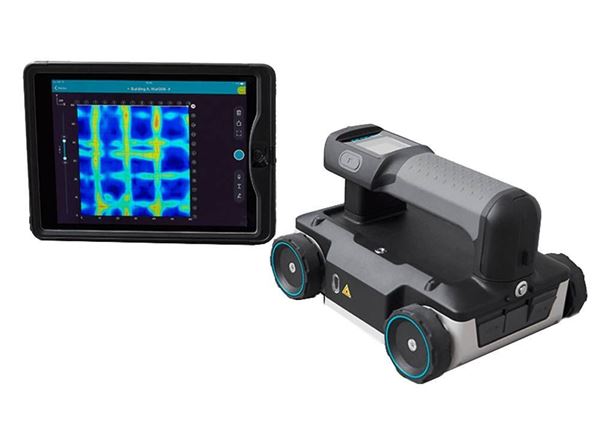Concrete Scanning: A Critical Action Towards Making Sure Architectural Integrity and Safety And Security
In the realm of building and framework maintenance, the importance of concrete scanning can not be overemphasized. This thorough process holds the key to unveiling potential dangers hidden underneath the surface area of apparently solid frameworks. By utilizing sophisticated technology and techniques, concrete scanning offers as an essential device in making certain that the stability and safety and security of buildings and bridges are supported to the highest possible requirements. However, beyond its surface-level ramifications, the duty of concrete scanning extends far much deeper than satisfies the eye.
Importance of Concrete Scanning
Concrete scanning plays a crucial role in making sure the structural stability and safety and security of structures and infrastructure projects. By making use of innovative technologies such as ground-penetrating radar (GPR) and electromagnetic induction, specialists can non-destructively check concrete frameworks to detect possible problems, spaces, embedded items, and support layout. This process enables early discovery of anomalies that could compromise the stability of a structure, protecting against pricey problems and making certain the safety and security of residents.
Concrete scanning is especially essential during the planning and construction stages of a task. Before drilling, reducing, or coring into concrete, scanning aids recognize the exact places of rebar, post-tension cords, and various other ingrained aspects, lowering the danger of accidental hits that could bring about architectural weaknesses. Furthermore, concrete scanning aids in quality control by validating the density of concrete covers and identifying any kind of disparities that may impact the general durability of the framework. Eventually, investing in concrete scanning solutions is not just a proactive action to mitigate threats however also an essential action towards keeping the long-term security and stability of structures and facilities.
Innovation for Concrete Assessment

Advantages of Very Early Discovery
Prompt discovery of structural concerns can substantially alleviate threats and guarantee the longevity of construction projects. By identifying potential troubles beforehand in the construction procedure, stakeholders can take proactive procedures to attend to concerns prior to they rise into larger and much more costly issues. One of the essential benefits of very early detection is the prevention of structural failings, which can posture serious safety and security threats and cause job delays and monetary losses.
In addition, very early detection permits prompt repairs and upkeep, which can assist extend the lifespan of the framework. By addressing concerns immediately, building groups can prevent costly repairs and even the demand for premature replacement of architectural elements. This aggressive approach not just saves time and cash however also boosts the general safety and sturdiness of the construction task.
Furthermore, very early detection can enhance job preparation and decision-making by offering stakeholders with beneficial insights right into the problem of the structure. Armed with this details, project managers can make educated selections concerning construction materials, timelines, and methods, bring about much more effective and successful task end results.
Ensuring Architectural Security
Making certain the structural security of a building task is critical to its security and longevity. Architectural stability refers to the capability of a building or facilities to keep its type and function under environmental problems and different tons. To achieve this, extensive analysis and surveillance of the framework are important. Concrete scanning plays an essential role in guaranteeing architectural security by finding possible problems such as gaps, delamination, or support deterioration that might jeopardize the honesty of the structure over time.
By making use of advanced scanning modern technologies like ground-penetrating radar (GPR) and electro-magnetic induction, building professionals can non-invasively evaluate concrete frameworks to determine areas of problem underneath the important link surface area. This positive method allows for the early discovery of weaknesses or flaws, allowing prompt repair work or support to avoid architectural failings.
Normal concrete scanning throughout different great post to read building and construction phases and throughout the life process of a structure can assist keep its stability, alleviate dangers, and ensure the security of owners. By focusing on architectural security through concrete scanning, building tasks can enhance their strength and longevity, eventually adding to greater safety and durability.
Stopping Crucial Failures
To safeguard versus tragic occasions, meticulous surveillance and positive upkeep are crucial in avoiding crucial failings within structural frameworks. Discovering possible issues prior to they rise is vital to stop structural failings. Implementing routine evaluations, such as concrete scanning, can expose concealed issues like gaps, fractures, or rust that can endanger the honesty of a framework. By making use of innovative scanning technologies like Ground Penetrating Radar (GPR) or Concrete X-ray, designers can non-destructively analyze the problem of concrete and identify weak points that call for support or repair - RainierGPR Service Areas.

Final Thought
Finally, concrete scanning plays an important function in guaranteeing structural stability and security by utilizing advanced technology for early detection of potential issues. This proactive method assists avoid vital failings and makes sure the security of structures. It is necessary to prioritize concrete assessment as a typical technique to shield the long life and security of buildings and infrastructure.
Concrete scanning plays a vital function in ensuring the structural integrity and safety of structures and facilities jobs. In addition, concrete scanning help in high quality control by confirming the thickness of concrete covers and spotting any discrepancies that might influence the total toughness of the structure. his explanation Concrete scanning plays a vital role in ensuring architectural stability by detecting possible problems such as gaps, delamination, or reinforcement corrosion that can jeopardize the integrity of the framework over time.

In conclusion, concrete scanning plays a critical duty in guaranteeing architectural stability and safety and security by using advanced innovation for very early discovery of potential concerns.